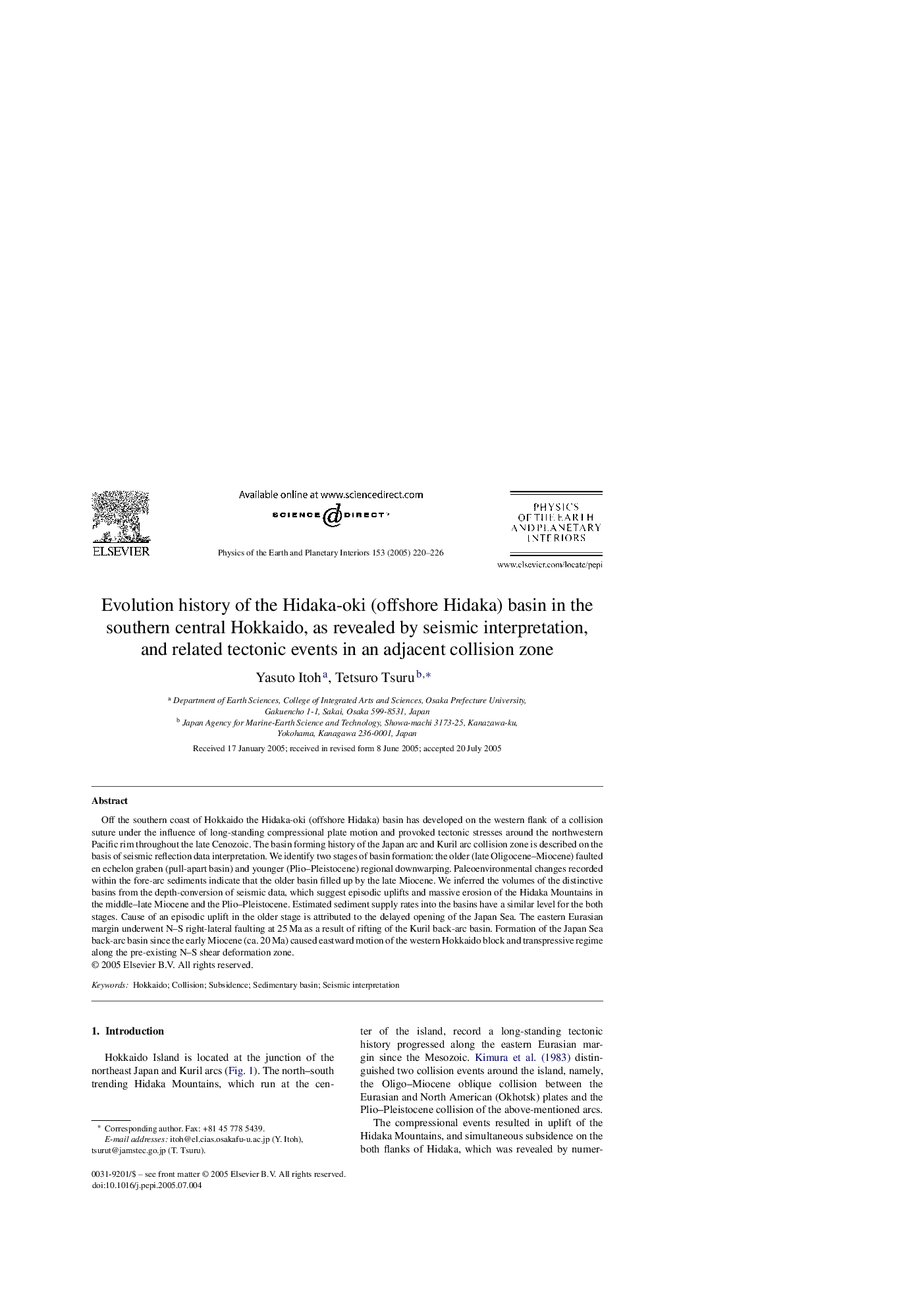| Article ID | Journal | Published Year | Pages | File Type |
|---|---|---|---|---|
| 10121238 | Physics of the Earth and Planetary Interiors | 2005 | 7 Pages |
Abstract
Off the southern coast of Hokkaido the Hidaka-oki (offshore Hidaka) basin has developed on the western flank of a collision suture under the influence of long-standing compressional plate motion and provoked tectonic stresses around the northwestern Pacific rim throughout the late Cenozoic. The basin forming history of the Japan arc and Kuril arc collision zone is described on the basis of seismic reflection data interpretation. We identify two stages of basin formation: the older (late Oligocene-Miocene) faulted en echelon graben (pull-apart basin) and younger (Plio-Pleistocene) regional downwarping. Paleoenvironmental changes recorded within the fore-arc sediments indicate that the older basin filled up by the late Miocene. We inferred the volumes of the distinctive basins from the depth-conversion of seismic data, which suggest episodic uplifts and massive erosion of the Hidaka Mountains in the middle-late Miocene and the Plio-Pleistocene. Estimated sediment supply rates into the basins have a similar level for the both stages. Cause of an episodic uplift in the older stage is attributed to the delayed opening of the Japan Sea. The eastern Eurasian margin underwent N-S right-lateral faulting at 25Â Ma as a result of rifting of the Kuril back-arc basin. Formation of the Japan Sea back-arc basin since the early Miocene (ca. 20Â Ma) caused eastward motion of the western Hokkaido block and transpressive regime along the pre-existing N-S shear deformation zone.
Related Topics
Physical Sciences and Engineering
Earth and Planetary Sciences
Geophysics
Authors
Yasuto Itoh, Tetsuro Tsuru,
